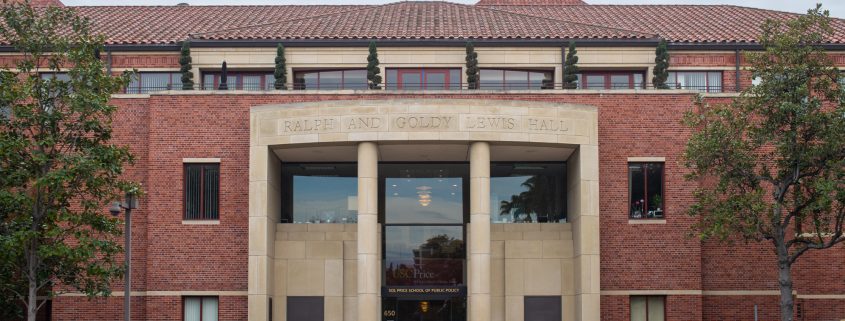Price School of Public Policy joins alliance with other universities committed to diversity initiatives

The USC Sol Price School of Public Policy is one of six top public policy universities collaborating for a new Public Affairs Diversity Alliance, according to an announcement by American University on Jan. 3.
The Alliance consists of Price, the Maxwell School of Citizenship and Public Affairs at Syracuse University, the Ford School of Public Policy at the University of Michigan, the Sanford School of Public Policy at Duke University and the Evans School at the University of Washington. For the first two years, the Alliance will be spearheaded by the American University School of Public Affairs.
Each participating university will hire up to two Alliance postdoctoral fellows or visiting scholars each year to support diversity within the school’s upper-level programs. After the fellows are instated, they will be guided by a mentor from their own school, as well as a mentor from another participating university.
Throughout their studies, the fellows will also be provided with programming that will be centered around their post-graduation careers.
LaVonna Lewis, the associate dean of Diversity, Equity and Inclusion at Price, will oversee the integration of the Alliance fellows at USC.
“Having more students of color coming through is one benefit,” Lewis said. “And I think it’ll help both the research and the learning environments on those campuses because you’ll have alumni and participants who will bring in different perspectives to campuses.”
Increasing diversity among faculty improves outcomes for underrepresented students, according to a study by Gary Oates, a professor at Bowling Green State University. By joining other Alliance schools, Price hopes to strengthen its emphasis on diversity and better outcomes in terms of faculty placement, Price Dean Jack H. Knott said.
Jorge Tapia, a first year graduate student in public administration, said more students want universities to prioritize diversity in their faculty.
“There’s an expectation from students to see diversity in their professors and faculty,” Tapia said. “I think it’s kind of a reflection of the times that we’re living in to kind of see more diversity in the line of academia.”
The academic background of Price faculty varies, with professors specializing in a wide range of topics and coming from universities from across the country. However, some Price students feel that the racial diversity of the faculty can be improved. Of the 27 tenured faculty members in 2016, 21 identified as white while one identified as black, three as Asian and two as two or more races. There were no Hispanic or Latino tenured faculty members in 2016.
“There’s a lot of intellectual diversity, but I wouldn’t say there’s a lot of racial diversity,” said Andy Kim, a freshman majoring in public policy.
Knott hopes to inspire other universities to increase the diversity of doctorate programs, while increasing the diversity of Price itself by successfully recruiting and supporting fellows, according to an article on the Price School website.
“We hope this mentorship and nurturing of postdocs into good jobs becomes a model other schools want to emulate,” Knott said in the article. “In the future, some of these schools will want to join the Alliance.”
Lewis said the Alliance’s programming will attempt to create an inclusive learning environment with a robust research agenda. She also plans to make any programming held at USC available to other Price postdoctoral fellows who could benefit from diversity networking and events.
“When we’re hosting programs that are a part of the Alliance, we’ll make sure that our other students will be available to access that programming,” Lewis said. “Our idea is kind of blending and making sure what’s considered … best practices get shared to as many students as possible.”
The universities are expecting their first Alliance fellows in Fall 2019.

